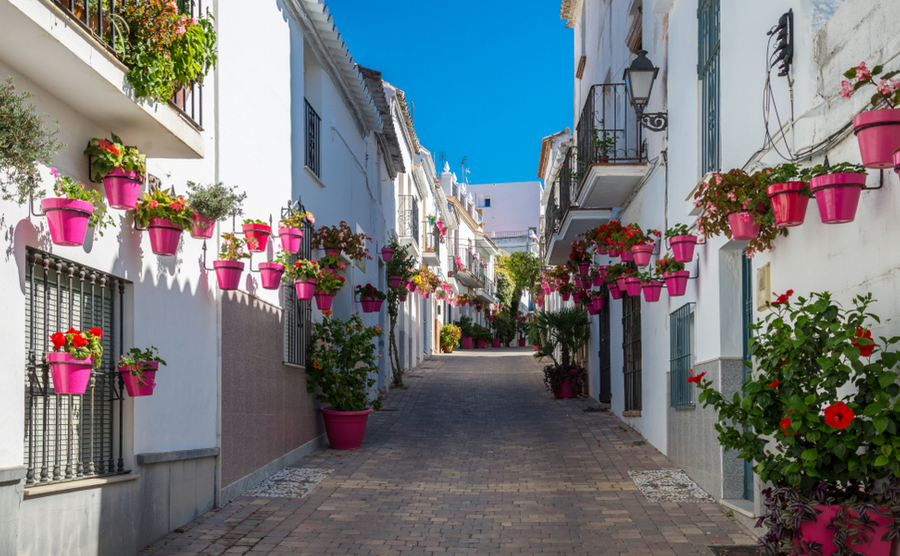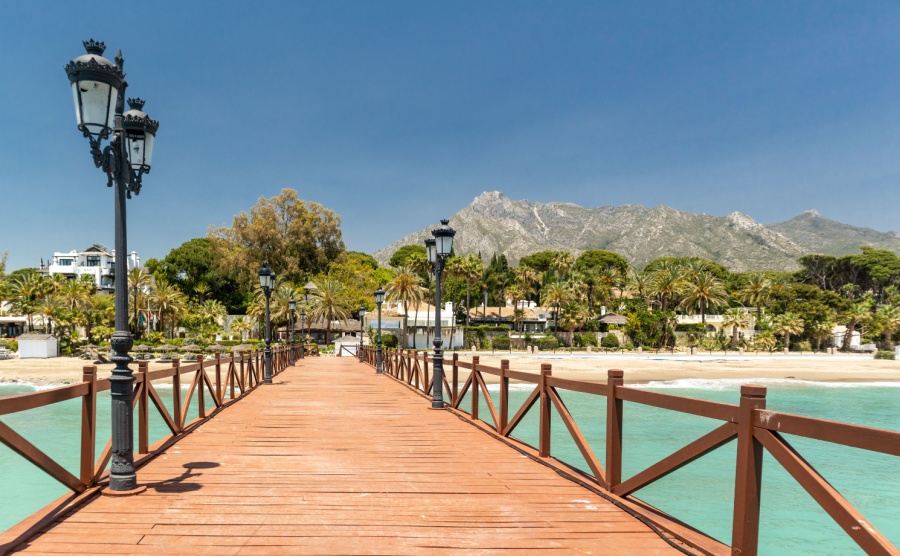Buoyant has been the buzzword in the Spanish property market during the first half of 2024. As price growth stabilises and mortgages become more attainable, demand has increased up and down the Costas. Here are some interesting observations from the industry’s key data resources.
Find homes in Spain via our property portal.
Rise in purchases
More people are buying property in Spain compared to last year. There was a 6% hike in residential property transactions in the first six months of 2024 compared to 2023. Recorded sales between January and June totalled 350,818, comfortably higher than the 330,874 for the same period last year, according to figures from Spain’s Notaries’ Association. June alone notched up 64,335, making it the month with the most sales so far in 2024 (61,916 in 2023).
Spanish regions by sales
Andalusia, home to the Costa del Sol and cities of Seville, Málaga, Granada and Almería, accounts for more sales than any other autonomous Spanish region, achieving around 20% of the country’s total in June (Notaries’ Association). Ranking second is the Valencian Community, home to the Costa Blanca and cities of Valencia and Alicante, with 16%. Next is Catalonia, which includes the Costa Brava and cities of Barcelona, Girona and Tarragona, claiming a 15% share, followed by Madrid (12.5%). The tourist-friendly islands of the Canaries and Balearics attract 3.5% and 1.7% respectively. Rising star Murcia now has a 3.5% market share.
Inflation easing
Property values in Spain continue to rise but thankfully for buyers the pace is slowing. In June 2024 average prices per square metre were 4.3% higher than June last year, namely €1,726/sqm compared to €1,655/sqm (Notaries’ Association). Growth was a lot more aggressive at the start of the year, when average year-on-year rises were 7.1% in January, 5.7% in February and 5.4% in March. The market began to soften in April and May this year, when growth was 3.1% and 3.0% respectively.
Price variation on the Costas
Focusing solely on popular coastal areas, the Balearic Islands are home to Spain’s most expensive property market. Average prices there rose 8.3% year-on-year in the second quarter of this year reaching €2,985/sqm, according to the latest report by TINSA, Spain’s leading property appraisers. For June alone, the Notaries’ Association recorded an even higher average price of €3,104/sqm for the Balearics.
According to TINSA, metropolitan Barcelona is the next priciest Mediterranean province, where average prices are €2,526/sqm (2.4% y-on-y rise) then Málaga with €2,215/sqm (9.5%) and Girona (Catalonia) with €1,810/sqm (5.9%).
More affordable provinces popular with foreign buyers include Alicante and Valencia – €1,506/sqm and €1,434/sqm respectively, and Las Palmas and Santa Cruz de Tenerife in the Canaries – €1,629/sqm and €1,689/sqm.
Where to go for the real bargains? Your budget stretches further in less developed areas of Andalusia including Almería (€1,234/sqm) and Huelva (€1,306/sqm), Tarragona in Catalonia (€1,499/sqm) and Murcia (€1,139/sqm).
Municipalities and cities
Prices vary greatly between municipalities within the same province. Within Málaga bigger budgets might prefer jewel in the Costa del Sol’s crown Marbella where average prices are €2,899/sqm. But further east along Málaga’s coastline in Vélez- Málaga, for example, where you’ll pay €1,865/sqm (TINSA, Q2 2024). In Alicante, the municipalities of Orihuela (€1,572sqm) and Torrevieja (€1,538/sqm) are more affordable than Benidorm (€1,848) in the northern Costa Blanca.
Looking at cities, being an easy journey into the bright lights without being in the centre saves money. In Valencia city average prices are €2,087/sqm but cheaper municipalities within the same province include Sagunto (€1,222/sqm) and Gandia (€1,232/sqm).
Central Barcelona isn’t cheap at €3,772/sqm, but one of its many surrounding municipalities could be an option – eg, Vilanova i la Geltru (€2,210/sqm) or Viladecans (€2,417/sqm) both south of the centre, or Mataró (€2,162/sqm) or Badalona (€2,354) to the north.
Mortgages uplift
The European Central Bank’s decision to drop interest rates in June appears to have triggered buyers’ appetite for mortgages in Spain. The 30,395 mortgages registered by buyers of residences (as opposed to investors or people re-mortgaging) in June was 13.9% higher than the same month in 2023 (Notaries’ Association). It is also the second highest number since at least January 2023 (as far back as the recent report shows). Only April 2024 recorded slightly more (30,850). As of June 2024, the average loan value for a Spanish residence is €152,773 and average loan to ratio 71.7%.
According to TINSA’s Q2 report, the average monthly mortgage payment in Spain is €711. Regional variations along the Costas could be useful for foreign buyers planning to buy with finance: Huelva €485, Cádiz €567, Málaga €934, Granada €538/month, Almería €480, Murcia €463, Alicante €570, Valencia €593, Barcelona €875, Girona €725, Santa Cruz de Tenerife €647 and Balearic Islands €1,338.
You might also like:
















